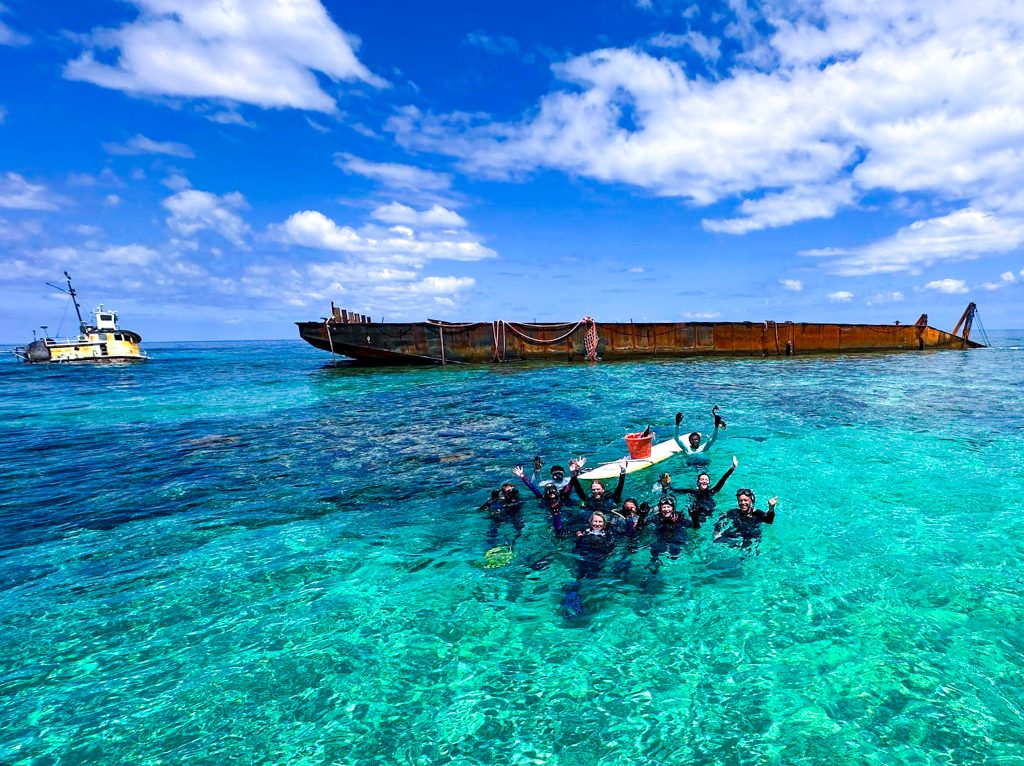
Volunteers Step Up Amid Ongoing Crisis
This week saw the second volunteer-led cleanup of the stranded tug and barge in Fowl Cays National Park—an ordeal that has dragged on for more than a year with no resolution in sight. As the owners remain conspicuously absent, Perry Institute for Marine Science (PIMS) once again mobilized local residents, divers, and conservation partners—including Bahamas National Trust, Bahamas Marine Mammal Rescue Organisation, Friends of the Environment, and Department of Marine Resources—to remove debris from the reef. This underscores the public’s growing frustration as corals that took decades to flourish continue to be ground away.
Backed by more than five decades of marine research and community engagement worldwide, PIMS pairs cutting‑edge science with on‑the‑ground action. They restore reefs and mangroves, map habitats, foster sustainable fisheries, and train ocean stewards through programs like the Reef Rescue Network. That expertise is now driving the cleanup effort in Fowl Cays, a community-centered action for a reef in crisis.

Legal Dispute Leaves Reef Vulnerable
According to recently revealed Supreme Court filings, Executive Marine Management Services was hired in March 2024 by the multi-billion-dollar Baker’s Bay development to transport sand and stones from Freeport to Great Guana Cay. The company subcontracted the tugboat from FowlCo Maritime and Project Services to tow its barge. When the tug and barge ran aground on March 26, 2024, the Port Department formally ordered both parties to remove the wreck. Instead, their dispute spiraled into a $5 million-plus lawsuit, leaving the barge to batter the reef while the matter drags on in court.
On the ground in Abaco, local residents have been left to deal with the aftermath. “Every time the wind and waves come up, the tug and debris from the barge shift and scatter ropes, twisted metal, and building materials that choke our corals and threaten marine mammals,” explains Ms. Denise Mizell, Abaco Program Manager for the Perry Institute for Marine Science (PIMS), who is leading volunteer dives at the wreck site. “We see the damage firsthand every time we dive—and it only gets worse when the weather turns.” PIMS, a global nonprofit committed to protecting and restoring ocean life, stresses that a full salvage operation is desperately needed before the reef suffers irreversible harm.
“This is our second major cleanup in 2025, and since we don’t have funding for this work, we’re entirely dependent on the generosity of our volunteers,” says Mizell. “I’m so grateful to them because it’s an enormous undertaking. We aren’t a salvage company, but we’re doing what we can to protect the reef from further damage.”
Over a long day underwater, volunteers logged more than two hours per diver wrestling with debris. “We finally moved one massive metal frame,” Mizell says. “It took four divers—fins off—walking the sandy seafloor to carry it. We burned through three hacksaw blades yet cut only half the rope. One surface‑support volunteer waited on a paddleboard, and every time we freed a length of line, we draped it over the board so he could paddle it back to the boat.”
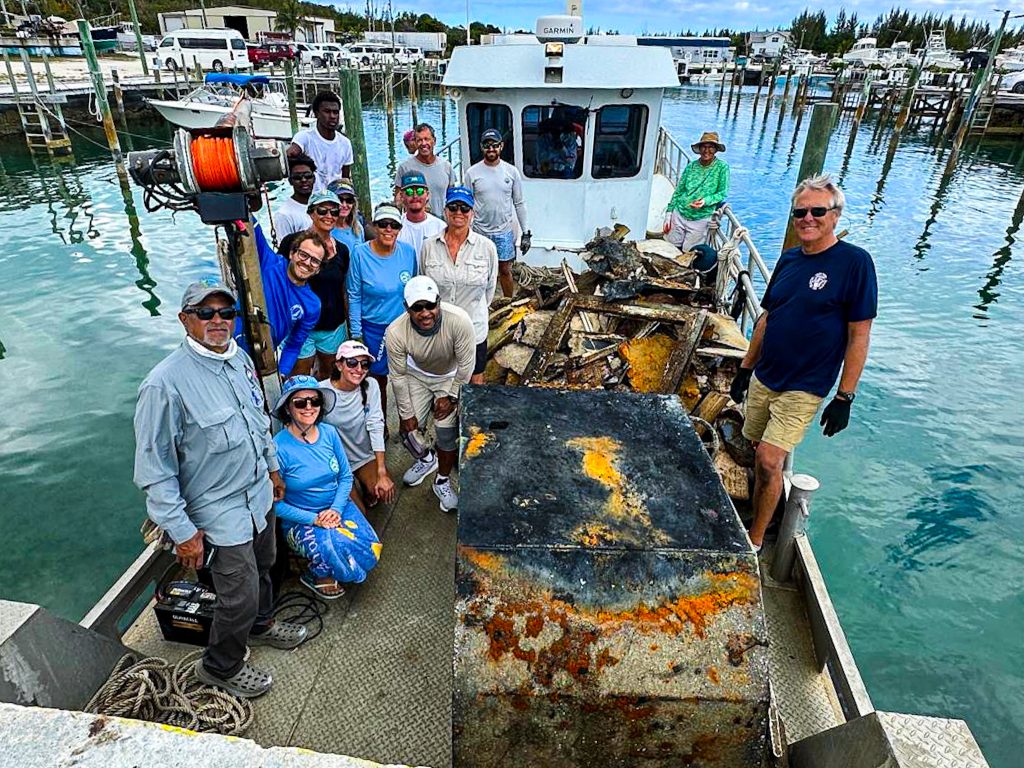
Support from Local Partners
On Tuesday, DMR and BNT boats, as well as a local boat captain and volunteers ferried divers to the wreck site. Troy Albury of Dive Guana donated scuba tanks and G&L Ferry donated the freight for the tanks, Marsh Harbour Boat Yard provided temporary space for debris, and homeowners on Elbow Cay offered vessels such as the “Sweet Sue” to carry people and equipment. Jim Todd, a medic with the Hopetown Volunteer Fire Department, stood by for diver safety. Young voices are also driving the effort, including volunteer Antoine Russell and Davonte McKinney of the Bahamas National Trust, who believe saving these reefs is vital for Abaco’s future.
“We all have a responsibility to protect these waters,” says McKinney, one of BNT’s snorkelers and surface support. “If we let the reef crumble, we’re losing more than coral—we’re losing the life and livelihood of our community.”
Divers were shocked by how deeply sand from the barge had buried the reef. “The reef creatures are now ten feet below a mound of sand that never used to be there. We were anchored in six feet of water where the charts show sixteen to eighteen. What little sticks out is covered in cyanobacteria—coral just can’t grow on shifting sand.”
For many, the most maddening part is that the barge’s cargo of sand and stones—intended for a major development—no longer matters. The damage has been done. Rope, metal sheets, and broken up plastic continue to wash off the wreck, injuring corals that have anchored local fisheries and tourism for generations. Volunteers say the salvage is beyond their capabilities, but they refuse to sit idle while the reef deteriorates.
“These line nets are a real entanglement danger to whales and dolphins,” says Dr. Charlotte Dunn, President of The Bahamas Marine Mammal Research Organisation. “So many ropes and materials were spilled on impact, and it’s still littered all around the site on the reef.”
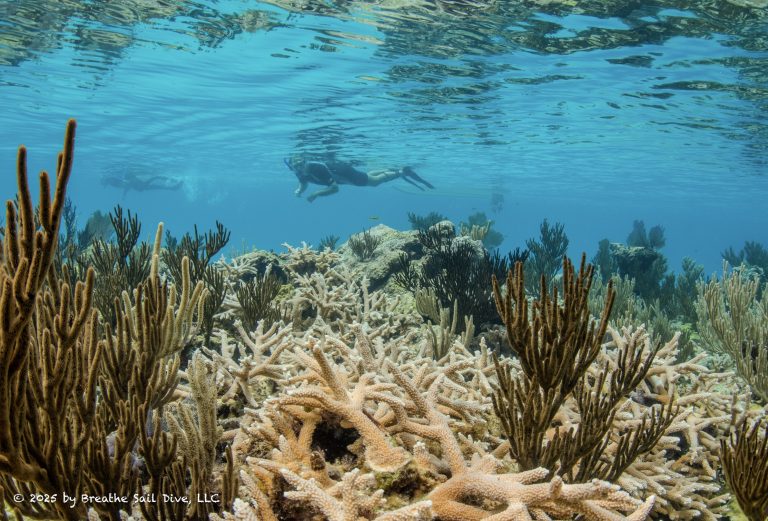
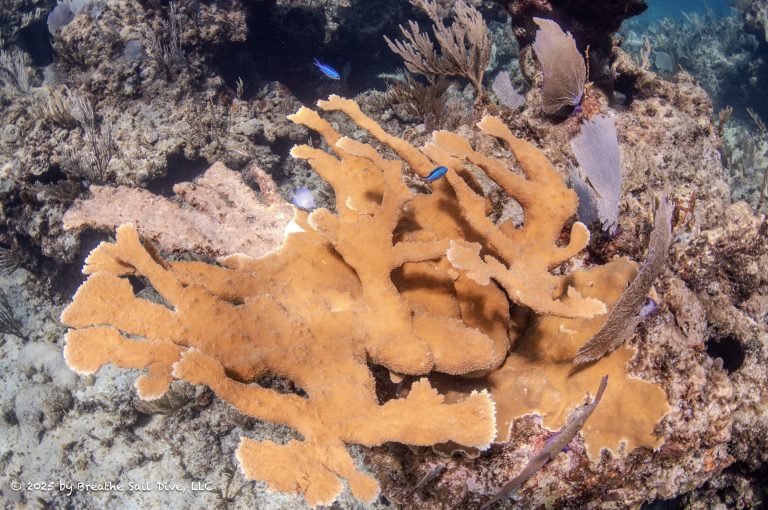
Urgent Need for Proper Salvage
For Mizell and her partners, lifting the barge itself is far beyond anything PIMS or volunteers could attempt. A full salvage would demand heavy‑lift cranes, specialized crews, and the owners’ insurance footing a substantial bill—none of which has materialized. Until that happens, the community is chipping away at the only part they can control: loose debris. Volunteers juggle ferry schedules to bring in scuba tanks, borrow boats to shuttle gear, and line up storage and disposal sites—then watch the forecast for a narrow window of calm seas.
Even after the wreck is gone, the reef will need years of hands‑on care—from replanting nursery‑raised elkhorn and staghorn corals to long‑term monitoring by PIMS’ Reef Rescue Network. As PIMS’ coral‑restoration arm, the Reef Rescue Network unites dive shops, nonprofits, and marine scientists to cultivate endangered corals in underwater nurseries and “re‑seed” them onto damaged reefs around the world.
“All of us—BNT, FRIENDS, BMMRO, local divers, homeowners, the cruising community—are pitching in,” says Mizell. “But we’re out here with mesh bags and volunteer boats. There needs to be a proper salvage operation.”
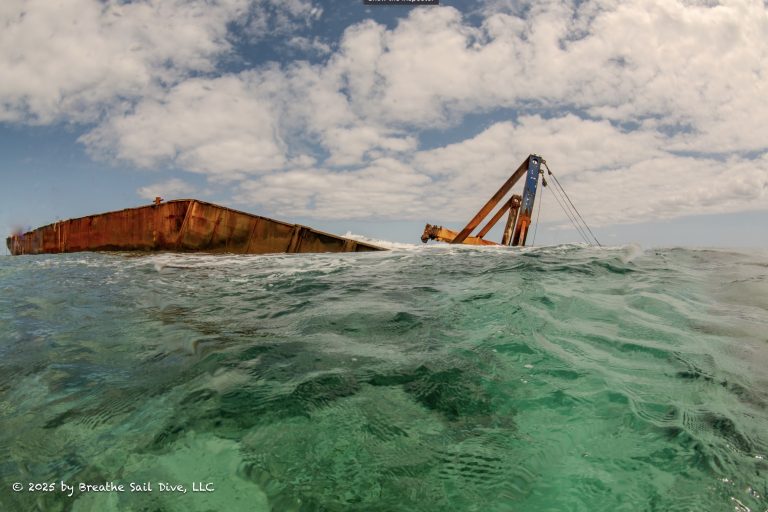
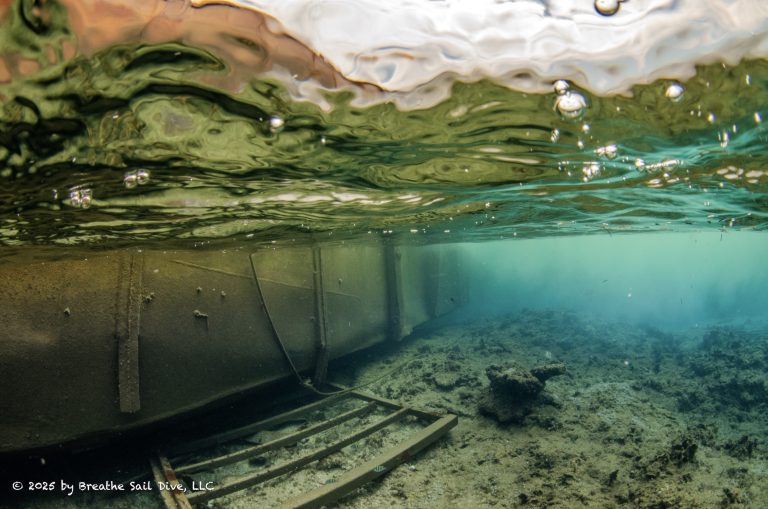
Community Commitment
Despite daunting odds, the volunteers remain undeterred. Audrey Allgood and Garrett McQuiston, a young couple running charter trips in Abaco, volunteered to dive on the site. “It’s our backyard,” says Allgood, “and if we don’t act, who will?”
In a place where reefs protect coastlines, fuel the tourism economy, and support local fishermen, many wonder how a stranded tug and barge can remain lodged in a national park for over a year. Lawsuits may assign who pays the bill eventually, but in the meantime, volunteers say they will do everything possible to keep Fowl Cays National Park from suffering irreversible harm.
For more information about the cleanup or to lend support, contact PIMS at dmizell@perryinstitute.org or WhatsApp +1 (242) 552-9959.
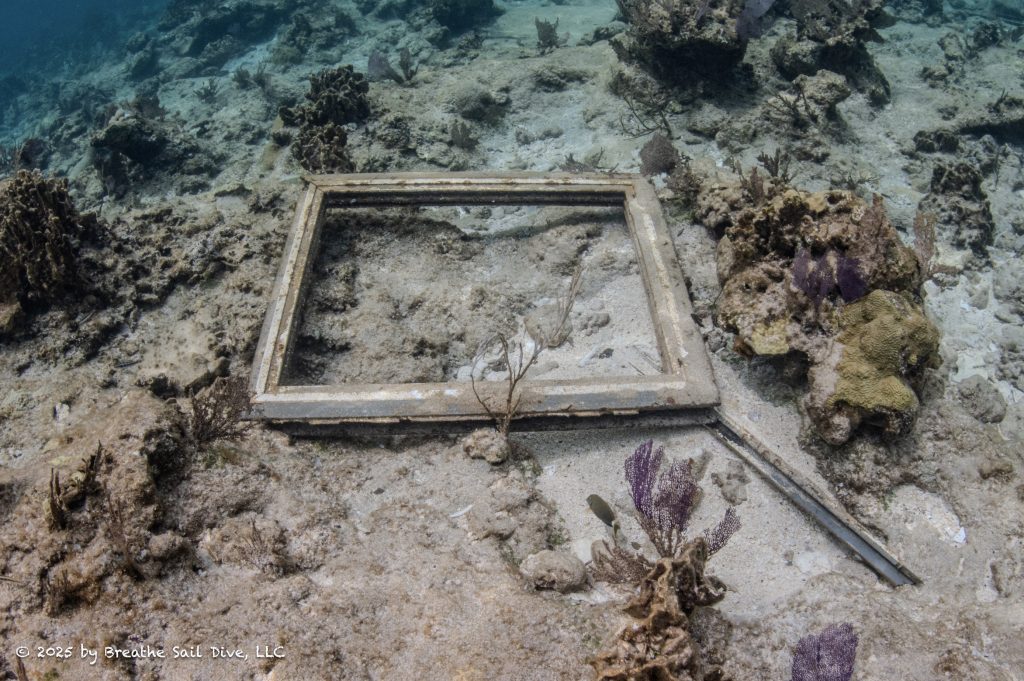
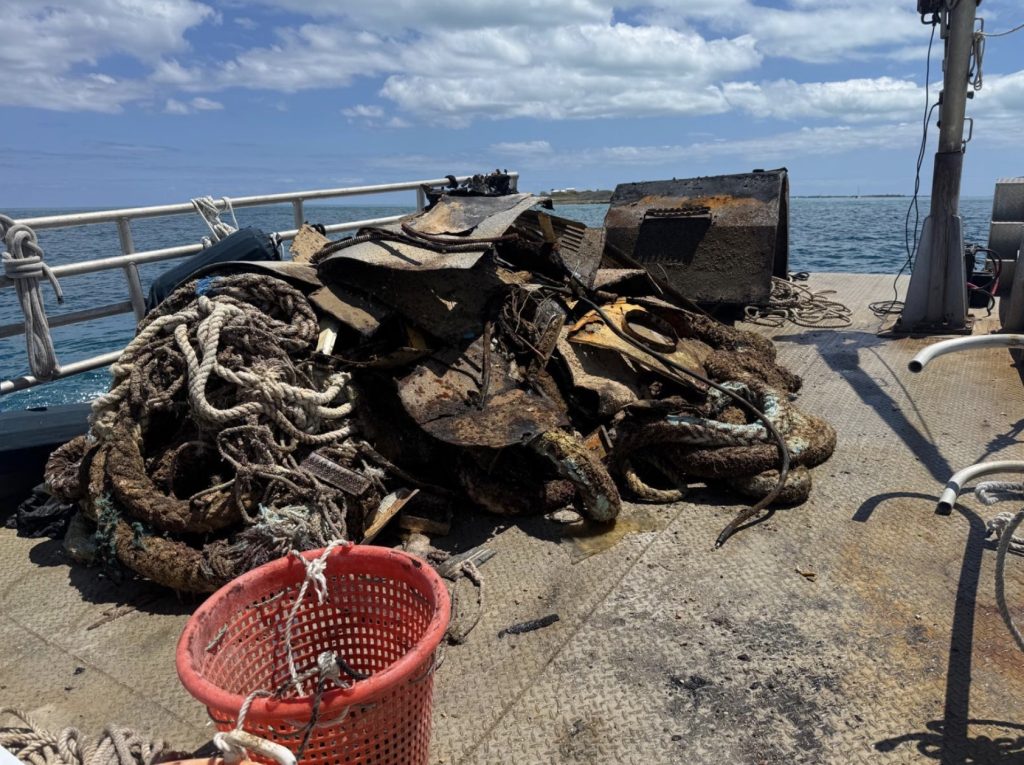
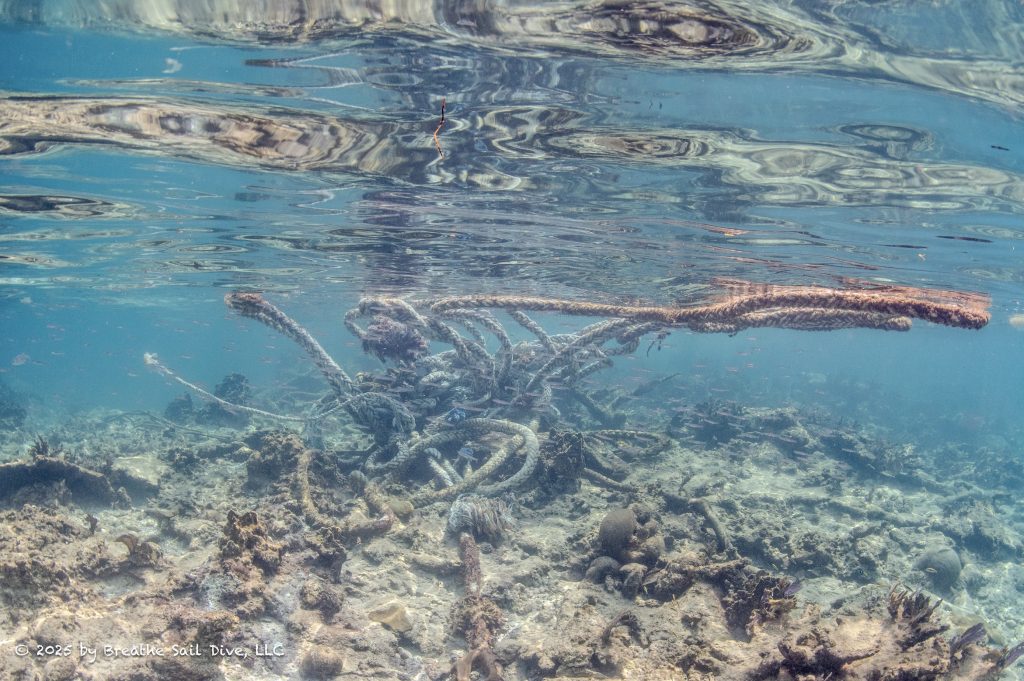
Dive Deeper
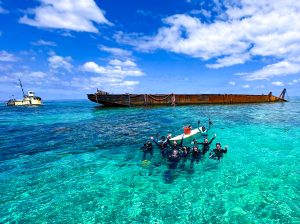
PIMS and Volunteers Step Up as Legal Battle Leaves Barge Grinding Reef in Fowl Cays National Park
Worn out but undefeated, the cleanup crew rallies around their paddleboard “workbench” in front of the stranded tug and barge—a snapshot of community grit after hours of underwater heavy‑lifting. Photo
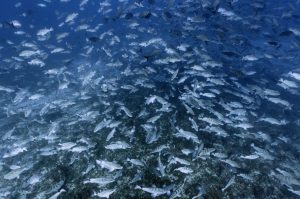
Thriving Fish Spawning Aggregation Inspires Hope for the Future
Nassau grouper FSA in Ragged Island during January 2025. | © André Musgrove Fish Spawning Aggregations & Nassau Grouper Imagine witnessing thousands of fish gathering in a synchronized spectacle, moving
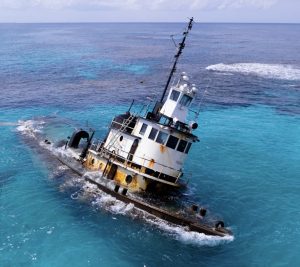
A Year Later, Stranded Tug and Barge Still Scars Reef in Fowl Cays National Park–Residents Demand Accountability
A haunting aerial view of the grounded tug and barge in Fowl Cays National Park—still embedded in coral a year later, a stark reminder of the cost of inaction. Photo

Women Leading Mangrove Restoration in The Bahamas
Have you ever wondered who’s behind the scenes saving our environment, right in our own backyard? Picture a group of energetic, determined women rolling up their sleeves and diving into
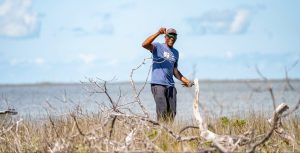
Rewilding the Marls of Abaco: PIMS Plants 100,000 Mangroves and Counting in 2024
As the afternoon sun bathes the Marls of Abaco in golden light, Bahamian boat captain Willis Levarity–locally known as “Captain to the Stars”–stands ankle-deep in soft, warm mud. A broad
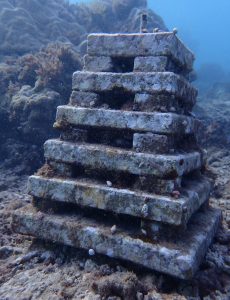
Unveiling Coral Reef Biodiversity: Insights from ARMS Monitoring Structures
An ARM teeming with new coral recruits and a diversity of marine life, highlighting reef recovery and biodiversity Understanding Coral Reef Biodiversity Most new PhDs in the natural sciences move
